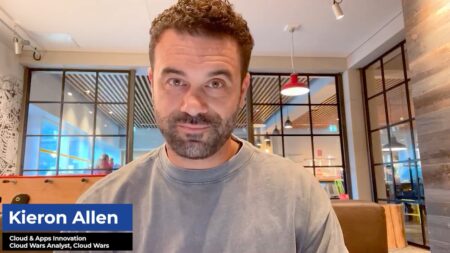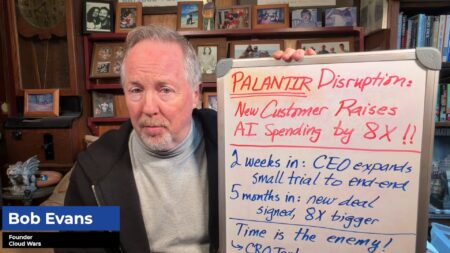
Saying that vendor consolidation has become a top priority for cloud buyers, co-CEO Bret Taylor said Salesforce is encouraging customers to “take out some point solutions” and replace those with Salesforce products.
When I first heard Taylor make that comment on Salesforce’s August 24 fiscal-Q2 earnings call, I was a bit puzzled — after all, Salesforce didn’t get to $30 billion in annual revenue in a wickedly competitive market by being passive in its pursuit of market share.
So why, I wondered, was Taylor using the high-profile earnings call to highlight Salesforce’s eagerness to help customers “take out some point solutions”?
I realized that the big point Taylor was making was this: because of the recession and the renewed scrutiny customers are devoting to all business expenses, the impetus to narrow down the number of tech suppliers buying is coming not from Salesforce but from business customers themselves.
Plus, this aggressive posture from Salesforce is coming to light just as we’ve analyzed an extraordinary achievement from Salesforce that shows its power in the marketplace: Salesforce Leapfrogs SAP as World’s Largest Enterprise-Apps Vendor.
In that context, Salesforce is looking to leverage that momentum in every way possible—and the effort to cut back on tech-vendor sprawl could be enormously beneficial for Salesforce if it can convince business leaders that such a shift is in their best interest.
As Taylor put it, “I think you’re seeing an increased focus on three things: One is time to value.
“Another is ensuring that these projects drive cost-savings in addition to customer satisfaction and topline growth.
“And then the third is reducing complexity and vendor consolidation.”
Taylor then expanded on his perception of what he described as a rising trend toward “vendor consolidation.”
“If you look at some of the innovations we’re bringing out like our Sales Cloud Unlimited edition or Salesforce Easy, which I mentioned earlier, they’re really efforts to enable our customers to do more with less and to enable them to use Salesforce as their sole vendor and take out some point solutions that perhaps aren’t getting the return on investments our customers are looking for,” Taylor said.
“So we’re sort of taking advantage of this opportunity to be the most-strategic vendor for our customers right now as they look to really hold their technology to high standards, which is to drive topline and bottom-line performance.”
Hmm — where have we heard this “it’s time to boost our market share” call to action before? That would be from Microsoft CEO Satya Nadella, who used his company’s late-July earnings call to emphatically state that Microsoft would use the current gloomy economic environment to “take share.” I dug into the implications of that in a piece called Microsoft Losing Cloud Share to Amazon and Google—Q2 Results Prove It.
As is the case with Salesforce, Microsoft is not exactly known as a kumbaya competitor who’s happy just to dip its beak every now and then — by my estimates, Microsoft Cloud will reach $100 billion in revenue this calendar year.
So, when Microsoft CEO Nadella and Salesforce co-CEO Taylor make a point of publicly declaring that they’re going to intensify their market-share initiatives, then we can probably expect that the results won’t be subtle.
For business customers, this presents an interesting dynamic: on the one hand, Taylor is indicating that Salesforce wants its customers to toss overboard some “point solutions” and go wall-to-wall with Salesforce, which could give those business customers some excellent negotiating leverage.
On the other hand, some of those point solutions might be in place precisely because they’re more capable than the competitive offering from Salesforce. So, I’d recommend that business customers think long and hard about these two options — each has its pluses and minuses.
But the big story for CXOs is that a couple of the world’s largest, most successful, and most powerful cloud vendors are making it clear that they’re in a mood to deal — and I would urge you, buyers, to take full advantage of the hunger that Salesforce and Microsoft are displaying via their CEOs by letting them know that you’ll be happy to help ease their hunger provided they’re willing to deliver exceptionally high value to you.
Because in the Cloud Wars, the ultimate winners are always the customers.








